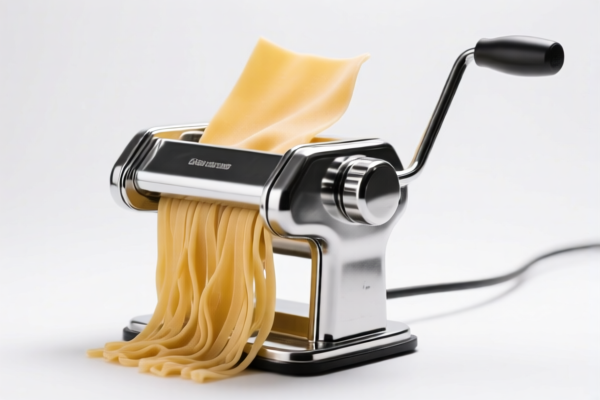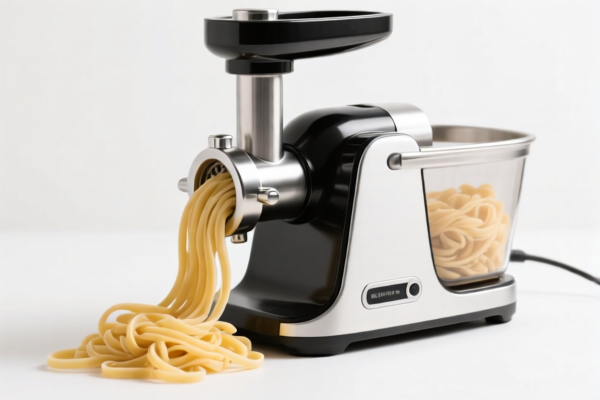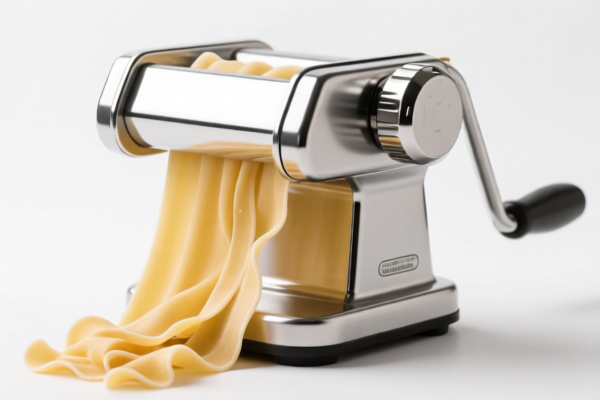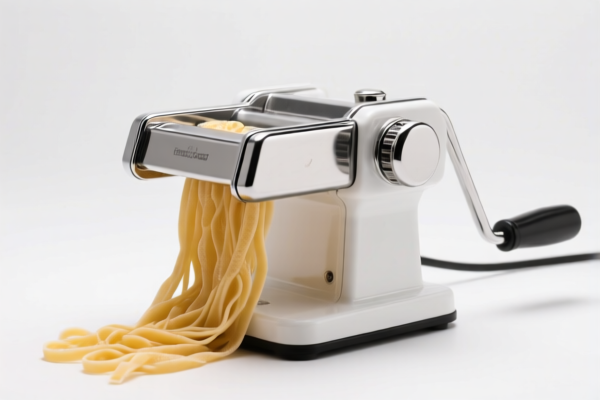| HS Code | Official Doc | Tariff Rate | Origin | Destination | Effective Date |
|---|---|---|---|---|---|
| 8438100010 | Doc | 37.5% | CN | US | 2025-05-12 |
| 8438100090 | Doc | 37.5% | CN | US | 2025-05-12 |
| 8479820040 | Doc | 55.0% | CN | US | 2025-05-12 |




Pasta Machine
A pasta machine is a specialized mechanical device used to prepare pasta dough and form it into various shapes. These machines range from manual, hand-cranked models to fully automated electric versions.
Materials
Pasta machines are primarily constructed from:
- Stainless Steel: Commonly used for rollers and cutting components due to its durability, hygiene, and resistance to corrosion.
- Aluminum Alloys: Often found in the body and frame, providing a lightweight yet sturdy structure.
- Chrome-Plated Steel: Used for components requiring strength and resistance to wear.
- Plastic/Polymer: Utilized for handles, knobs, and some housing parts, offering ease of grip and operation.
- Wood: Historically used for some manual machine components, though less common in modern designs.
Purpose
The primary purpose of a pasta machine is to efficiently and consistently:
- Knead Dough: Some machines assist in the initial kneading process, though this is more common in combination pasta makers.
- Roll and Flatten Dough: The machine reduces the dough's thickness to the desired consistency for pasta sheets.
- Cut Pasta into Shapes: Machines feature various cutters to create different pasta types.
Function
Pasta machines operate by:
- Dough Feeding: Dough is fed into the rollers.
- Rolling: The rollers compress the dough, progressively reducing its thickness with each pass. The gap between the rollers is adjustable to control the final thickness.
- Cutting (Optional): Dough is passed through cutting attachments to create specific pasta shapes.
- Manual or Electric Operation: Manual machines require hand cranking, while electric machines use a motor to drive the rollers.
Usage Scenarios
- Home Cooking: Popular for individuals and families who frequently make fresh pasta.
- Restaurants & Commercial Kitchens: Used for high-volume pasta production, ensuring consistency and efficiency.
- Culinary Schools: Essential tools for teaching pasta-making techniques.
Common Types
- Manual Pasta Machines:
- Table-Mount: Clamped onto a table for stability. These are the most common type for home use.
- Countertop: Designed to sit directly on a countertop.
- Electric Pasta Machines:
- Basic Electric Models: Offer automated rolling and cutting.
- Combination Pasta Makers: Include motors for kneading, rolling, and cutting, often with attachments for different pasta shapes.
- Fully Automated Machines: Capable of complete pasta production with minimal user intervention.
- Motorized Attachments: Attachments for stand mixers that function as pasta makers.
Pasta Shapes Produced
Pasta machines can create a wide variety of pasta shapes, including:
- Spaghetti: Long, thin cylindrical noodles.
- Fettuccine: Flat, ribbon-like noodles.
- Lasagne: Wide, flat sheets.
- Tagliatelle: Similar to fettuccine, but slightly wider.
- Ravioli: Filled pasta squares or circles (requires a separate ravioli attachment).
- Pappardelle: Very wide, flat noodles.
- Capellini (Angel Hair): Extremely thin noodles.
- Reganelle: Flat noodles, wider than tagliatelle.
- Orecchiette: Small, ear-shaped pasta.
The declared goods are identified as a pasta machine, used for the industrial preparation or manufacture of food or drink, specifically for the manufacture of macaroni, spaghetti or similar products.
The following HS codes are relevant based on the provided information:
-
8438100010: Machinery, not specified or included elsewhere in this chapter, for the industrial preparation or manufacture of food or drink, other than machinery for the extraction or preparation of animal or fixed vegetable or microbial fats or oils; parts thereof: Bakery machinery and machinery for the manufacture of macaroni, spaghetti or similar products Bakery machinery. This code specifically covers bakery machinery and machinery for making macaroni, spaghetti, or similar products.
- 84: Chapter 84 covers Nuclear reactors, boilers, machinery and mechanical appliances; parts thereof.
- 38: Heading 38 covers Machinery for the industrial preparation or manufacture of food or drink.
- 100010: Subheading 100010 further specifies bakery machinery and machinery for macaroni, spaghetti, or similar products. The current tax rate is 37.5%, comprised of a 0.0% base tariff and a 7.5% additional tariff, increasing to 30% additional tariff after April 2, 2025.
-
8438100090: Machinery, not specified or included elsewhere in this chapter, for the industrial preparation or manufacture of food or drink, other than machinery for the extraction or preparation of animal or fixed vegetable or microbial fats or oils; parts thereof: Bakery machinery and machinery for the manufacture of macaroni, spaghetti or similar products Other. This code covers other machinery related to bakery products and pasta manufacturing.
- 84: Chapter 84 covers Nuclear reactors, boilers, machinery and mechanical appliances; parts thereof.
- 38: Heading 38 covers Machinery for the industrial preparation or manufacture of food or drink.
- 100090: Subheading 100090 specifies "other" machinery within this category. The current tax rate is 37.5%, comprised of a 0.0% base tariff and a 7.5% additional tariff, increasing to 30% additional tariff after April 2, 2025.
Customer Reviews
No reviews yet.